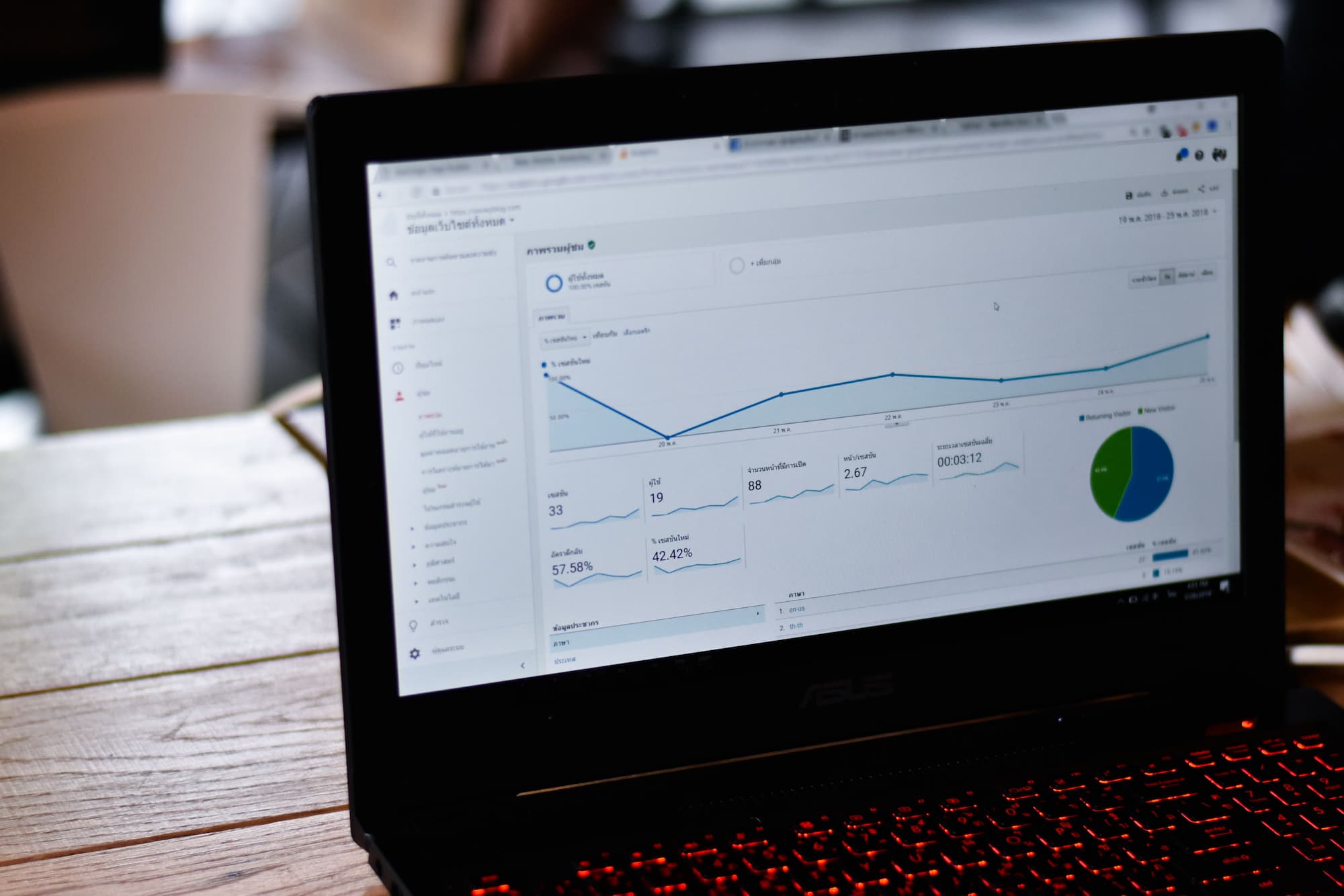If you’ve read dating advice, you’ve probably heard the concept, “let them come to you.” It’s a powerful concept that involves waiting for someone to approach you based on the value you provide—rather than pursuing them.
While this is not easy to do these days, it also happens to be the core concept behind the inbound marketing strategy.
Instead of pursuing (outbound marketing) your prospects with ‘disruptive’ ads (pop-ups, banners, and video ads)—you attract customers by providing valuable content tailored to their needs (often without selling directly).
In other words, you allow them to come to you by solving their problems, educating them on products and services, and delighting/entertaining them.
Inbound marketing is all the rage these days, and there are many reasons why. For one, it’s incredibly effective for generating leads.
In fact, it’s been proven that businesses (B2B or B2C) using inbound tactics generate 126% more leads than those who don’t. It’s also cheaper than outbound marketing, and the leads it generates have a higher chance of converting.
SEO (search engine optimization) is another productive marketing strategy, and it has a lot in common with inbound marketing.
Namely, it’s the use of content that makes them so similar. Search engine optimization entails adjusting your website’s content, so it ranks higher on search engines to generate organic traffic. Inbound marketing involves creating content tailored to your audience.
As you can imagine, combining both is a match made in heaven—which is what I’m going to talk about today.
Read on to discover how you can leverage SEO and inbound marketing strategies to drastically increase organic traffic, leads, and conversions.
What Is Inbound SEO?

When you combine your search engine optimization efforts with inbound marketing efforts, it’s referred to as Inbound SEO. In a nutshell, it’s a hybrid of both strategies that involves creating specific types of content for your audience.
To start, here’s a breakdown of the stages of inbound marketing:
- Attract phase. Whenever someone from your target audience ventures online, they’re seeking a name for their problem. That can include researching different pain points or looking up a new product. The idea is to attract them to your website with content related to their issues and interests and could be as simple as providing a how-to guide for fixing an IT-related problem (if you sell IT services, that is).
- Convert phase. By now, you’re catering to your prospects with relevant content. They’re researching solutions via your website and learning more about what you offer. Now, you need to convert them by delving deeper into their pain points and providing solutions tailored to them. This is the stage where you convince them to sign-up for your email newsletter in exchange for an eBook or whitepaper.
- Close phase. Now is the time to capitalize on the trust you’ve built by supporting their decision-making regarding a purchase, usually through email marketing automation where you are nurturing them using an email sequence. This is where you’ll want to recommend the perfect solution for their problem.
- Delight phase. Once customers have made a purchase, you’ll want to demonstrate to them your appreciation for their business. That aids with both customer loyalty and engagement. During this phase, you’ll still want to provide valuable and delightful content. In turn, they will become promoters and advocates of your brand by recommending you to others.
As you can see, the inbound philosophy is all about drawing customers in and building trust with them through relevant content.
Now, let’s take a look at what an SEO strategy entails:
- Perform keyword research. Keywords are the search queries that users type into search engines like Google; they’re the bread and butter of SEO marketing. To discover what your target audience is searching for, you’ll need to conduct thorough keyword research (I recommend using this fantastic keyword research tool from my good friend, Robbie Richards). Once you have your target keywords, you can start placing them in your content and metadata.
- Align content to keywords. Consider ensuring that your website caters to your target audience, so make sure each page revolves around keyword topics (blog articles, product/service pages, location pages, etc.).
- Optimize each page. SEO is more about placing keywords in the body of your content. It’s also about tweaking technical elements, such as page speed and alt tags. The more you can optimize your page for search engine algorithms, the better.
- Create content. Think about the kind of content you’ll need to create that’s related to your keywords (blogs, videos, guides, etc.) to improve your SEO further. A steady release schedule of content relating to your audience is what you ideal.
- Track, analyze, and adjust. Once your strategy is in place, it’s necessary to monitor metrics, such as organic traffic, click-through rate, and bounce rate. If something isn’t working, tweak your strategy accordingly.
You’ve probably noticed the overlap with inbound marketing in the content section. Just like inbound, a solid SEO strategy involves creating relevant content for your audience.
Marrying SEO with Inbound Marketing: Like PB & J
Now that you know the philosophies behind each strategy, it’s time to learn how to combine them.
The attract phase of inbound marketing aligns with the keyword research stage of SEO marketing.
In other words, to effectively attract customers to your site, you need to know which keywords they use on search engines. That will help your content appear to the right audience, which is crucial. Your inbound marketing content won’t reach the right crowd if you target the wrong keywords.
It would be a shame to create stellar content that solves the problems of your target audience only to select the wrong keywords (or not use keywords at all). In many cases, we create great content but don’t align it with how our audience is searching on Google, which is a significant misstep.
For this reason, SEO is essential for any successful inbound marketing campaign. That becomes even more apparent when you realize that search engines are the leading source of referral traffic, even trumping social media.
The two methodologies are also closely linked by relying on content creation for a target audience.
Think about it like this: inbound marketing strategies lead you to create content for your target audience; SEO helps you rank the content, so it reaches the right people continuously. In that sense, the two have a synergistic relationship (more on this later).
How is SEO Different from Inbound?

Now that you know how SEO and inbound marketing are alike, how are they different? While on-page SEO focuses on content creation and keywords—there’s more to SEO than that.
It’s a broad subject that includes technical elements, metadata, backlinks, analytics, and much more.
Inbound marketing, on the other hand, is typically straightforward. As previously mentioned, it involves creating content tailored to your audience so that they find you instead of you finding them.
While SEO shares that sentiment to a degree, you’ll need to do more than create great content to rank on search engines.
For example, if Google can’t discover, crawl, or index your site, you won’t show up on Google at all. That’s why SEO best practices include using Google Search Console to ensure that Google has visibility of your website (don’t forget to upload your XML sitemap).
You’ll also need a wide array of marketing tools for SEO, such as site crawlers, domain authority checkers, and keyword research tools.
On the technical side of things, SEO entails:
- Adding alt tags to images
- Passing Google’s Core Web Vitals test
- Using structured data markup
- Tweaking robots.txt file
- Adding an SSL certificate
These are all processes that have nothing in common with inbound marketing but are still crucial for SEO. If you plan on using SEO with inbound marketing, you’ll need to familiarize yourself with its technical factors and on-page SEO elements (keywords, metadata, content, external/internal links, etc.).
Is SEO or Inbound Better?
A question I hear all too often is, “Which will work better for us, SEO or inbound marketing?”
It’s not a matter of which is better, as they always complement one another. Think about it like peanut butter and jelly—they’re both great on their own, but they’re fantastic together.
If you want to find success with your digital marketing, you should always aim to combine SEO and inbound marketing.
After all, if you want your inbound content to reach the right audience, you’ll need to use SEO to do so efficiently. Conversely, if you’re focusing entirely on technical SEO, you won’t find much success.
A winning SEO strategy always includes creating high-quality content for your target audience. That’s why you’ll want to implement the inbound marketing philosophy whenever you’re writing blogs, shooting videos, or creating infographics.
As Albert Einstein probably would have said, “SEO without inbound marketing is lame, and inbound marketing without SEO is blind.”
4 Ways to Get Started with SEO Inbound Marketing
At this point, we’ve covered how both SEO and inbound marketing and how both strategies complement one another.
Now it’s time to learn how you can get started using SEO inbound marketing tactics at your business. That way, you’ll gain a ton of organic traffic while generating highly targeted leads likely to convert. What’s not to love about that?
Let’s take a look at some of the most coveted SEO inbound marketing techniques.
1. Content Marketing

If SEO and inbound marketing are siblings, then content marketing is their cousin. We’ve already discussed how SEO and inbound marketing share similarities. Therefore it makes sense that you also throw content marketing into the mix.
What’s content marketing?
It involves the creation of content to appeal to your target audience. That aligns with both SEO and inbound marketing, so it’s a natural place to get started.
In general, content marketing involves the creation of:
- Blog posts
- YouTube videos
- How-to guides
- Infographics
- Whitepapers
- eBooks
Content marketing and inbound marketing meet when you create your content to solve the pain points of your ideal customer.
For example, content marketing may involve writing a blog post aimed at informing readers above all else. The goal may be to simply build customer trust by educating them on a particular topic.
That same content evolves into inbound when you change its goal to attract a niche audience. Instead of informing readers, you clue them in on how your solutions will solve their pain points.
See the difference?
You’re using your content to attract a specific crowd of people to your website so you can turn them into leads and eventually convert them.
You can add SEO to the mix by using targeted keywords related to your niche in your content. That way, your content will show up in searches for the people most interested in it.
2. Using Infographics
While it falls under content marketing, infographics are influential for inbound marketing and SEO.
In fact, you can even use relevant infographics to build links to your site. If you construct an appealing infographic that contains crucial statistics for your field, other blogs will likely want to link to it on their blog, granting you a quality, relevant backlink.
An infographic is excellent for inbound marketing because it’s a concise and visually appealing way to present information. Instead of spending 15 minutes reading a blog post, they can quickly digest crucial tidbits by checking out your infographic.
Your infographic will also build trust with your prospects by answering their questions quickly and succinctly when done correctly.
3. Social Media Content
Social media is excellent for both inbound marketing and SEO. Platforms such as Facebook, Twitter, and Instagram have billions of daily users—all waiting to check out your content.
SEO-wise, sharing your content on social media can help you obtain backlinks. It will also help you generate more traffic, as you’ll gain clicks from users clicking on your links through social media.
From enterprises to startups, social media is another beneficial marketing strategy that you shouldn’t ignore. And you can pursue organic and paid ad strategies simultaneously to boost your social reach.
Moreover, a presence on social media helps you build your brand and grow trust with your customers. As you continue to create content, don’t forget to share it on your social media.
4. Non-Intrusive Chatbots
Another way you can bolster your SEO and inbound marketing efforts is by using a chatbot. By non-intrusive, I mean that the chatbot should only appear whenever a user clicks on it, instead of automatically appearing as soon as they load the page.
How can a chatbot help SEO and digital marketing?
By providing you with authentic customer feedback!
Not only can chatbots gather valuable insights for you (which will make it easier to target the right keywords and create content tailored to your audience), but they can help guide your customers down the sales funnel.
Remember to make your chatbot feel natural so that it won’t count as interruptive marketing.
SEO Inbound Marketing: No Longer a “Nice to Have”
SEO and inbound marketing are a match made in heaven, and incorporating them into your digital marketing strategy is a crucial component to a company’s success online these days.
Given that inbound marketing is the #1 way to generate high-quality leads that are the most likely to convert, and SEO is the #1 way to generate consistent organic traffic, we highly recommend using the two together since we’ve seen the results for many of our clients first-hand.
Will you join us on the journey?

Miles Anthony Smith, a tech keynote speaker, SEO consultant, and founder of Why Stuff Sucks®, delights in delivering invaluable content to people hungry for answers to their most vexing questions or challenges.







 By
By ![[FREE DOWNLOAD] THE INBOUND BRAND: BUILDING A STRATEGICALLY BRANDED CONTENT STREAM](https://no-cache.hubspot.com/cta/default/1698557/863c4643-3c0a-42b9-93a0-cb646a4788ab.png)



